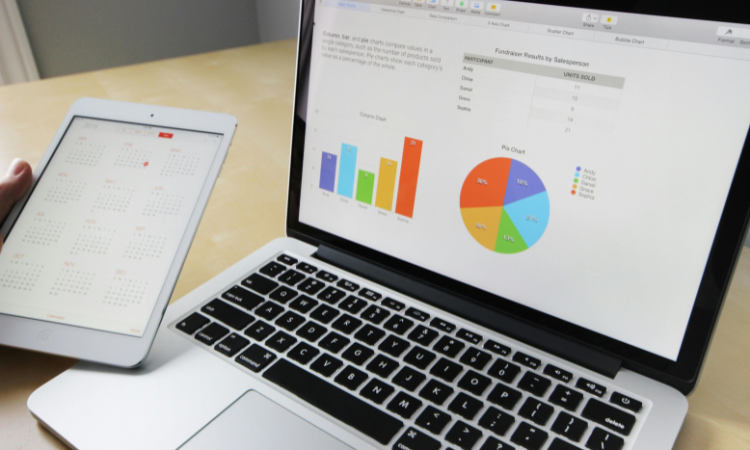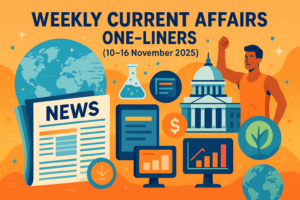Discover Pandipedia
Pandipedia is the world's first encyclopaedia of machine generated content approved by humans. You can contribute by simply searching and clicking/tapping on "Add To Pandipedia" in the answer you like. Learn More
Expand the world's knowledge as you search and help others. Go you!
Let's look at alternatives:
- Modify the query.
- Start a new thread.
- Remove sources (if manually added).
Hydrometallurgical processes can recover over 90% of valuable metals from spent lithium-ion batteries.
By 2030, the global volume of battery materials available for recycling will reach 1.4 million tons.
The lithium-ion battery recycling market is projected to grow from $5.41 billion in 2024 to $24.15 billion by 2032.
China accounts for 80% of global lithium-ion battery recycling capacity as of 2023.
Recycling lithium-ion batteries can reduce CO2 emissions by up to 80% compared to primary production.
Let's look at alternatives:
- Modify the query.
- Start a new thread.
- Remove sources (if manually added).
Get more accurate answers with Super Pandi, upload files, personalised discovery feed, save searches and contribute to the PandiPedia.
Transcript
Did you know that artificial intelligence is creating jobs in climate technology? New roles are emerging where technical expertise meets environmental sustainability. For example, job positions like artificial intelligence engineer and sustainability specialist are among the fastest growing in the United Kingdom and the United States. This fusion of advanced technology with clean energy and green innovation is opening exciting opportunities for a secure future. Imagine a career where your skills help optimize renewable energy, improve environmental management, and drive smart green solutions. The future of work is changing now, and the green wave in artificial intelligence is just getting started.
Let's look at alternatives:
- Modify the query.
- Start a new thread.
- Remove sources (if manually added).
Tensions are rising in East Asia and beyond—could we be on the brink of major geopolitical shifts? Here's a look at today's most pressing global news.
🧵 1/6
Japan Scrambles Fighter Jets: Japan scrambled aircraft after spotting a suspected Chinese drone near Yonaguni island close to Taiwan. What will this mean for regional security? According to CBS News.
🧵 2/6
China Issues Travel Warning: In a strong reaction to Japan's military comments on Taiwan, China has advised its citizens to avoid traveling to Japan. Will this affect tourism? Reported by Medium.
🧵 3/6
USA-China Trade War Escalates: Donald Trump's return is stirring up tariffs and tension, intensifying the ongoing trade war. What could this mean for global markets? 'Disruption is inevitable', as cited from Wikipedia.
🧵 4/6
Major Cloudflare Outage: A worldwide Cloudflare outage is affecting access to major websites and platforms, including social media. How will this impact online activity? As reported by TS2 today.
🧵 5/6
Which of these developments surprises you most? Share your thoughts below!
🧵 6/6
Sources from:
Let's look at alternatives:
- Modify the query.
- Start a new thread.
- Remove sources (if manually added).
The Role of Smart Home Technology in Aging in Place
Aging in place is the concept of living safely, independently, and comfortably in one’s own home and community for as long as possible, regardless of age, income, or ability level[2]. This preference is shared by a growing number of older adults who wish to remain in their familiar surroundings, preserving their independence and enhancing their quality of life[2][6]. Smart home technologies are essential tools that support this goal by offering innovative solutions for health monitoring, emergency response, and home automation[2]. These technologies, defined as an integration of Internet-enabled digital devices with sensors and machine learning, can acquire and apply knowledge about the physical environment and its inhabitants to improve their experience[13]. By assisting with daily activities, from medication management to fall detection, AI-powered systems enable older adults to live independently for longer[7].
Key Technologies and Sensors for Senior Care

A range of smart devices and sensors are designed to enhance safety, health, and independence for older adults aging in place.
Fall Detection
Falls represent a significant threat to the health and independence of adults 65 and older[3]. Fall detection systems are classified as either wearable or non-wearable[3]. Wearable devices include smartwatches like the Apple Watch SE, which has built-in fall detection, and emergency pendants[8][21]. Non-wearable systems use devices embedded in the home, such as cameras, motion sensors, microphones, and floor sensors, to detect falls without requiring the user to wear anything[3]. A major challenge is the lack of real-world testing; most studies rely on falls simulated by young, healthy volunteers, which may not accurately reflect the circumstances of a real fall experienced by an older adult[3][14].
Health and Activity Monitoring
Smart health monitoring devices track vital signs, physical activity, and medication adherence, helping with the early detection of health issues and the management of chronic conditions[2][13]. Unobtrusive sensors, such as motion, contact, and light sensors, can monitor Activities of Daily Living (ADL), providing insights into routines related to sleep, meals, and mobility without being invasive[1][13]. This data can help detect changes in behavior that may signal a health issue[1].
Medication Management and Home Automation
Automated medication dispensers can audibly notify an older adult when it's time to take their medicine and record the exact time of intake in an app for family members or caregivers to review[6]. These systems can also alert a pharmacy when a refill is needed. Broader home automation systems, often controlled by voice assistants like Amazon Alexa, enhance comfort and safety[1][8]. This includes smart locks that eliminate the need for keys, smart lighting, and doorbell cameras that allow residents to screen visitors remotely[8][19]. Energy management systems with smart thermostats can also optimize energy consumption by learning user patterns and adjusting settings automatically[1].
Ethical Design for Autonomy and Trust
The integration of smart technology into the home raises significant ethical challenges that must be addressed to ensure user trust and well-being.
Privacy and Data Security
Privacy is a primary ethical concern, as smart home technologies collect extensive sensitive data within deeply personal spaces[1][4]. Researchers often distinguish between 'informational privacy' (avoiding misuse of data) and 'physical privacy' (avoiding unwanted sensory access, like being watched)[9]. While developers focus on the more tractable problem of data security through encryption and secure networks, end-users may have more visceral concerns about physical privacy that are harder to address[9]. Users often face 'all-in or all-out decisions' with no choice but to accept broad data collection to use a device[12]. This necessitates robust data protection mechanisms, clear policies on data use, and transparent consent processes that give users genuine control[1][23].
Autonomy and User Control
Smart home technologies should enhance, rather than diminish, a user's autonomy and decision-making capabilities[1][4]. Systems should be designed to assist users while allowing them to intervene and retain final control over decisions[1]. While developers often see providing choices to end-users as a solution to ethical dilemmas, these choices are often constrained by the initial design, which embeds the researchers' own ethical standpoints[9].
Bias, Transparency, and Explainability
AI algorithms are prone to perpetuating biases if trained on imbalanced datasets, which can lead to discriminatory outcomes[1]. To ensure fairness, developers must use diverse datasets and regularly audit algorithms for bias[1]. Transparency and explainability are also essential for building user trust[1]. Users need to understand what data is being collected and the rationale behind an AI system's decisions, a concept known as Explainable AI (XAI)[1].
Usability and Social Acceptance
Significant barriers to adoption exist, including cost, usability issues, and social stigma[22]. Older adults may be hesitant to integrate technology due to a need for more instruction, concerns about how data is gathered, and a preference for gradual adoption[6]. Some also resist wearing devices due to the stigma associated with them, feeling that it 'makes them feel old'[8]. There is also a fear that technology could replace, rather than complement, human interaction and care[1][15].
The Path Forward: Responsible Innovation in Smart Home Care
When used appropriately, smart home technology has the potential to improve quality of life and maintain safety for older adults, supporting their desire to age in place[4]. However, realizing this potential requires a proactive and collaborative approach to ethical design[23]. The ability to respond to ethical concerns like privacy, autonomy, and usability will be critical to the future development and application of these technologies[4]. Effectively addressing these challenges demands an interdisciplinary approach where researchers, policymakers, industry leaders, and ethicists work together[1]. This collaboration is necessary to establish guidelines that safeguard individual rights, promote inclusivity, and foster responsible innovation[1]. By decoupling concepts like choice and privacy, the duty to protect users can be placed more firmly with researchers and developers, ensuring that systems are both technologically and ethically robust[9]. Ultimately, a user-centered design that empowers individuals and respects their values is fundamental to creating smarter, safer, and more equitable smart home ecosystems[1].
Let's look at alternatives:
- Modify the query.
- Start a new thread.
- Remove sources (if manually added).
The Imperative for Human Oversight in Critical AI Systems
Human-in-the-Loop (HITL) is a design approach where artificial intelligence systems are intentionally built to incorporate human intervention through supervision, decision-making, or feedback[7]. This model moves away from total automation toward a collaborative paradigm between people and machines, ensuring humans remain actively involved in AI-driven decisions, especially when the outcomes are critical[7]. The need for HITL arises from the inherent limitations of AI; even advanced models can hallucinate actions, misinterpret prompts, amplify societal biases, or overstep boundaries[1][3]. In high-stakes domains such as finance, aviation, and healthcare, where decisions carry significant real-world consequences, such errors are unacceptable[3][7]. HITL systems combine the efficiency and scale of AI with human judgment, intuition, and ethical reasoning[7]. This partnership is not a fallback for when AI fails but a proactive strategy for building trustworthy and responsible AI systems[7].
Frameworks and Design Patterns for Implementation

Several frameworks and design patterns facilitate the integration of human oversight into AI workflows. Tools like LangGraph are ideal for building structured workflows with checkpoints for human input, while CrewAI focuses on collaborative, role-based agent teams where a human can act as a decision-maker[1]. The HumanLayer SDK enables agents to communicate with humans through familiar channels like Slack and email for asynchronous decisions[1]. Common HITL design patterns include:
- Approval Pipelines (Post-Processing): The AI generates an output, which is then routed to a human for review, approval, or revision before it is finalized. This acts as a final quality gate[7].
- In-the-Loop (Blocking Execution): The AI pauses mid-task to request human input, such as approval or clarification, before it can proceed. This is common in regulated or safety-critical contexts[7]. The workflow involves the agent proposing an action, pausing for human review, and resuming only upon approval[1].
- Human as a Tool: The agent is designed to see a human as another callable tool. When it encounters uncertainty, it routes a question to the human and uses the response to continue its task[1].
- Role-Based Approvals: Permissions are structured so that only humans in specific roles, such as a "Reviewer," can approve certain actions or access requests initiated by an agent[1].
Establishing Oversight Thresholds
Determining when to involve a human is a critical design choice. HITL is most valuable when the stakes are high, ambiguity is present, or human values are paramount[7]. Human oversight is essential for high-stakes decisions in fields like finance, healthcare, and law, where mistakes can have severe consequences[7]. Intervention is also warranted when the AI model's confidence is low or the situation is ambiguous, requiring a human to interpret or disambiguate[7]. Furthermore, subjective decisions involving ethics, fairness, or aesthetics necessitate human judgment that is difficult to encode in algorithms[7]. Conversely, HITL may be unnecessary for latency-sensitive tasks where the model has proven accuracy, such as real-time fraud detection, or for highly repetitive and clearly defined processes[7]. Organizational governance must define these thresholds clearly. Boards should establish policies on what AI can be used for, set thresholds for human review, and create escalation protocols[13].
The Critical Role of Feedback Loops

Feedback loops are fundamental to creating AI systems that learn and improve over time[5][9]. An AI feedback loop is a cyclical process where an AI model's outputs are collected, analyzed, and used for its own enhancement, facilitating continuous learning[6]. This process typically involves the AI receiving data, generating an output, receiving feedback on that output from humans or real-world outcomes, and then using that feedback to refine its algorithms and improve future performance[6]. These loops can be either reinforcing, which amplifies change, or balancing, which stabilizes the system[5]. In practice, this allows an AI to become more accurate over time by identifying its errors and feeding the corrected information back into the model as new input[9]. The benefits include improved model precision, better adaptability to changing environments like fluctuating market demands, and a more intuitive user experience[6].
Interface Design for Building Trust and Ensuring Usability
Effective user interface (UI) design is crucial because users interact with interfaces, not algorithms[4]. In high-stakes applications like finance, the UI is the "interface of trust," turning complex algorithmic outputs into understandable and actionable insights[4]. Key design principles include clarity, transparency, and user control. Instead of using vague jargon like "AI-enhanced," the UI should use plain language to explain what a recommendation means[4]. Transparency is vital; users need to know why a system made a particular decision, such as flagging a transaction[4]. A critical element for building trust is providing users with override options. Allowing users to undo or edit an AI's automated action reinforces that the AI is a supportive tool, not a replacement for their judgment[4]. The interface should also visually communicate the AI's confidence level, using qualifiers like "likely" versus "confirmed" to help users gauge how much to trust a recommendation[4].
HITL in High-Stakes Applications: Finance, Aviation, and Healthcare
In finance, HITL is essential for managing risk and ensuring fairness. AI is used in credit underwriting to assess borrowers, but human oversight is needed to make final lending decisions, especially for those with limited credit history[8]. For example, JPMorgan Chase uses AI to detect anomalous transactions, but human analysts are key to confirming actual fraud[3].
The aviation industry integrates AI to enhance safety across all phases of flight[12]. AI-driven pilot assistance systems provide real-time recommendations in challenging situations, while predictive maintenance algorithms analyze sensor data to forecast equipment failures before they occur, as demonstrated by Airbus's Skywise platform[12]. In air traffic control, AI helps optimize routes and manage congestion, but human controllers retain ultimate authority[12].
In healthcare, AI systems like Watson Health analyze patient records to suggest diagnoses and treatment options, but the final decision rests with doctors[3]. This model acknowledges that complex medical decisions require a combination of AI's data-processing power and a physician's real-world experience and intuition[3].
Best Practices for Governance and Implementation
Implementing effective HITL systems requires a strategic approach grounded in strong governance. Organizations should design for specific decision points by identifying where human input is most critical, such as for access approvals or destructive actions, and build explicit checkpoints into the workflow[1]. Approval logic should be delegated to a policy engine rather than hardcoded, allowing for declarative and versioned changes[1]. Comprehensive audit trails are essential, ensuring that every request, approval, and denial is tracked and reviewable for accountability and compliance[1]. At the highest level, boards must treat AI as a standing enterprise risk, not merely a technical issue[13]. This involves establishing a clear governance framework, maintaining an inventory of all AI deployments, and integrating AI risk into existing audit and assurance structures[13]. Finally, it is crucial to effectively train human operators, providing them with clear guidelines to ensure they understand their roles and can make consistent, informed decisions when interacting with AI systems[2].
Let's look at alternatives:
- Modify the query.
- Start a new thread.
- Remove sources (if manually added).
Get more accurate answers with Super Pandi, upload files, personalised discovery feed, save searches and contribute to the PandiPedia.
Understanding FOMO and Its Psychological Roots
FOMO, or the fear of missing out, is the anxiety or unease that arises when an individual believes that others are enjoying rewarding experiences without them. This feeling is commonly fueled by the curated images and updates on social media, where peers appear to be living more vibrant and fulfilling lives[2][3].
Psychologically, FOMO is deeply rooted in the human desire for social connection and belonging. Our brain is wired to compare our experiences with those of others and to fear exclusion, which can lead to heightened stress, anxiety, and even lowered self-esteem[2][5].
Additionally, factors such as loss aversion, where the potential loss of a unique experience outweighs the benefits of what is already present, intensify these feelings, making the idea of missing out seem disproportionately significant[2].
Research indicates that individuals with low self-esteem and those prone to social anxiety are particularly vulnerable to FOMO, as they may depend on social media to validate their self-worth and to continuously search for signs of social inclusion[3].
Strategies to Transform from FOMO to JOMO
Transitioning from the fear of missing out (FOMO) to the joy of missing out (JOMO) involves reshaping one's mindset and lifestyle to focus on personal fulfillment rather than external validation. One primary strategy is to develop a mindful awareness of the present moment by incorporating practices such as meditation, deep breathing, or simply pausing to observe one's surroundings. This mindfulness practice helps to break the cycle of constant comparisons and reduces the incessant urge to check social media[8].
Setting clear boundaries around digital usage is another crucial step. Many individuals have found that limiting time spent on social media by scheduling specific check-ins or even performing a digital detox can alleviate the compulsive need to stay connected and foster an appreciation for offline experiences[4][12].
In addition, re-evaluating personal priorities and engaging in activities that align with one's values can help reinforce the joy of missing out. This means choosing to participate in experiences that are deeply meaningful rather than succumbing to the pressure of what everyone else is doing. Prioritizing quality over quantity in social interactions, whether by nurturing close relationships or dedicating time to self-care, is integral to this transformation[11].
Cognitive-behavioral approaches, such as challenging negative thought patterns and focusing on gratitude for one's own life, further support the shift from FOMO to JOMO. Recognizing and appreciating one's unique journey—even if it looks different from others'—can diminish feelings of envy and inadequacy[10].
Reflection Exercises to Reinforce a Positive Mindset
Structured reflection activities are a valuable tool for individuals seeking to overcome FOMO and cultivate JOMO. One effective exercise involves writing down personal values and goals in a gratitude journal. By recording daily moments of thankfulness and the small wins that contribute to a fulfilling life, individuals can reframe their focus from what they are missing to what they already have[4].
Another recommended method is to engage in group reflection activities. For example, trainers have used card-sorting games where participants rank or match cards that feature key ideas and personal experiences. This exercise not only reinforces learning but also encourages participants to share their insights on what truly matters, helping to build a shared narrative of satisfaction and contentment[9].
Additionally, simple practices such as 'the snowball activity,' where individuals anonymously write down their thoughts on success and then discuss these ideas in small groups, can promote a deeper understanding of personal fulfillment. These activities create an environment where individuals reflect on their accomplishments and learn to value their own journey over societal expectations[9].
Success Stories and Personal Transformations

Personal narratives serve as powerful reminders that transformation from FOMO to JOMO is not only possible but also highly rewarding. One compelling success story comes from a student who shared their journey of overcoming FOMO. Initially overwhelmed by the pressure of constant social media updates, this individual began by consciously limiting online time and unfollowing accounts that triggered negative feelings. By practicing gratitude every night and setting boundaries to protect their personal time, they gradually discovered a sense of peace and contentment that had previously eluded them[4].
Other testimonials highlight that by prioritizing offline interactions and investing in face-to-face relationships, many have experienced increased satisfaction and improved mental health. Embracing JOMO not only helps to reduce stress and anxiety but also allows people to reclaim precious time and energy that can be devoted to self-discovery and nurturing meaningful connections[11].
For instance, one narrative from a digital detox campaign explains how stepping away from the pressures of constant connectivity enabled individuals to refocus on their passions, whether that be pursuing a hobby or spending quiet evenings with loved ones. These success stories underscore that by aligning one's actions with personal values, it is possible to transform anxiety over missed experiences into genuine joy in one's chosen way of living[12].
Conclusion
The journey from FOMO to JOMO is a transformative process that requires an understanding of deep-seated psychological drivers and the active implementation of practical strategies. Recognizing that social media often presents an incomplete picture of reality can help individuals reframe their perceptions and embrace lives full of meaningful, personal experiences rather than constant comparison. Through mindfulness, setting boundaries, engaging in cognitive-behavioral practices, and participating in reflective exercises, people can gradually shift their focus from the anxiety of what they might be missing to the joy of being present in their own lives[2][10].
Ultimately, as demonstrated by personal success stories and supported by research, cultivating the joy of missing out allows individuals to enhance their well-being, deepen their relationships, and live with a renewed sense of purpose and contentment in the digital age[13].
Let's look at alternatives:
- Modify the query.
- Start a new thread.
- Remove sources (if manually added).
Transcript
Welcome to Pet Insights, where today we explore the rise of pet gene testing kits. Increasingly, dog owners are sending simple saliva samples to laboratories in order to reveal details about their pet's breed makeup, ancestry, and even possible health risks. These tests provide a wealth of insight. By examining a dog's DNA, owners can learn about inherited conditions, genetic traits, and even personality characteristics that may influence exercise and nutrition needs. Not only do these insights help tailor daily care, they also support veterinarians in making more informed recommendations. In addition to benefiting individual pet care, the market itself is booming. Experts predict the overall pet gene testing market will grow from nearly 450 million US dollars by next year to more than 1 billion US dollars by the mid-2030s, showing an impressive annual growth rate. Pet genetic testing kits can provide both peace of mind and practical advice for pet owners, making them an increasingly popular tool in proactive pet care.
Let's look at alternatives:
- Modify the query.
- Start a new thread.
- Remove sources (if manually added).

In the Frutiger Aero aesthetic, butterflies and other insects symbolize the harmony of technology and nature, enhancing the organic and vibrant feel of the designs. These delicate creatures often appear nestled within bubbles or lush greenery, embodying optimism and a whimsical touch, which resonates with the era's focus on bright colors and natural elements[4].
The serene imagery, characterized by glossy textures and lively palettes, further highlights the aesthetic’s core themes of environmentalism and technological coexistence, creating a comforting visual representation of a digitally optimistic future[6].
Let's look at alternatives:
- Modify the query.
- Start a new thread.
- Remove sources (if manually added).
Urgent global news: Tensions in Venezuela escalate as the U.S. ramps up military presence! 🚢 What's really happening, and why should you care? Let's break it down. 👇
🧵 1/6
**U.S. Military Buildup in Venezuela**: The USS Gerald R. Ford Carrier Strike Group has arrived in the Caribbean amidst rising tensions. This move signals a significant escalation in U.S. military readiness against Maduro's regime. How will this shift regional dynamics? As reported by CNN on November 16, 2025.
🧵 2/6
**Chemical Attacks in Ukraine**: Human rights organizations report alleged use of chemical weapons in recent attacks against Ukrainian civilians. The implications are grave, as they could lead to new international scrutiny. How will nations respond? As reported by Fox News on November 16, 2025.
🧵 3/6
**Survivors Urge Epstein File Release**: Survivors of Jeffrey Epstein are making a public plea for comprehensive transparency as the House prepares to vote on releasing more case files. This could unveil critical information—will Congress heed their call? As reported by CNN on November 16, 2025.
🧵 4/6
**Venezuelan Deportations**: The U.S. has recently deported 298 Venezuelan nationals, intensifying the crisis for those fleeing Maduro's regime. These deportations come amid heightened political rhetoric—what's next for those impacted? As reported by CNN on November 16, 2025.
🧵 5/6
Which fact surprised you most? Share your thoughts! 👇
🧵 6/6
Sources from:
Let's look at alternatives:
- Modify the query.
- Start a new thread.
- Remove sources (if manually added).






















.jpg)




